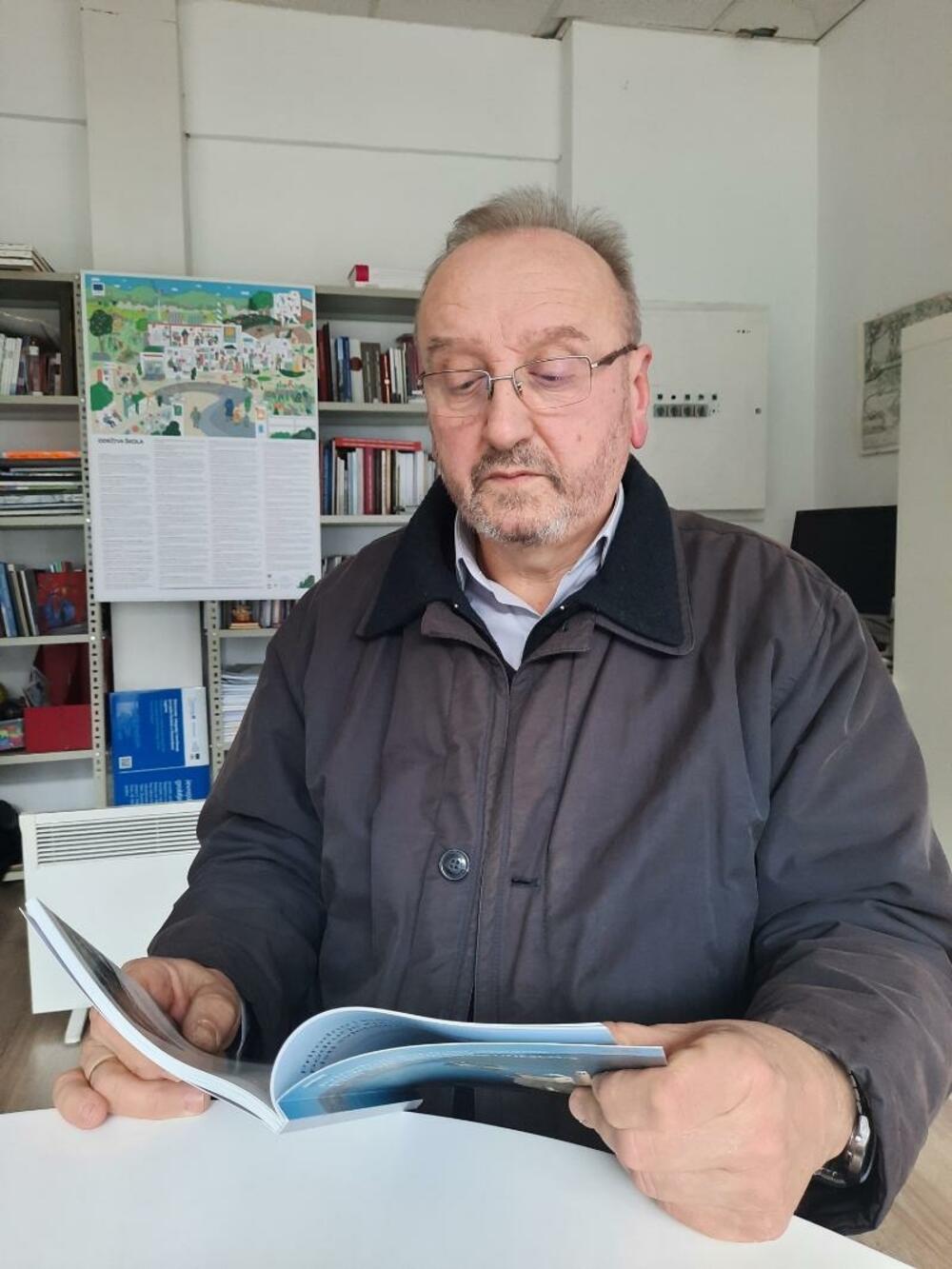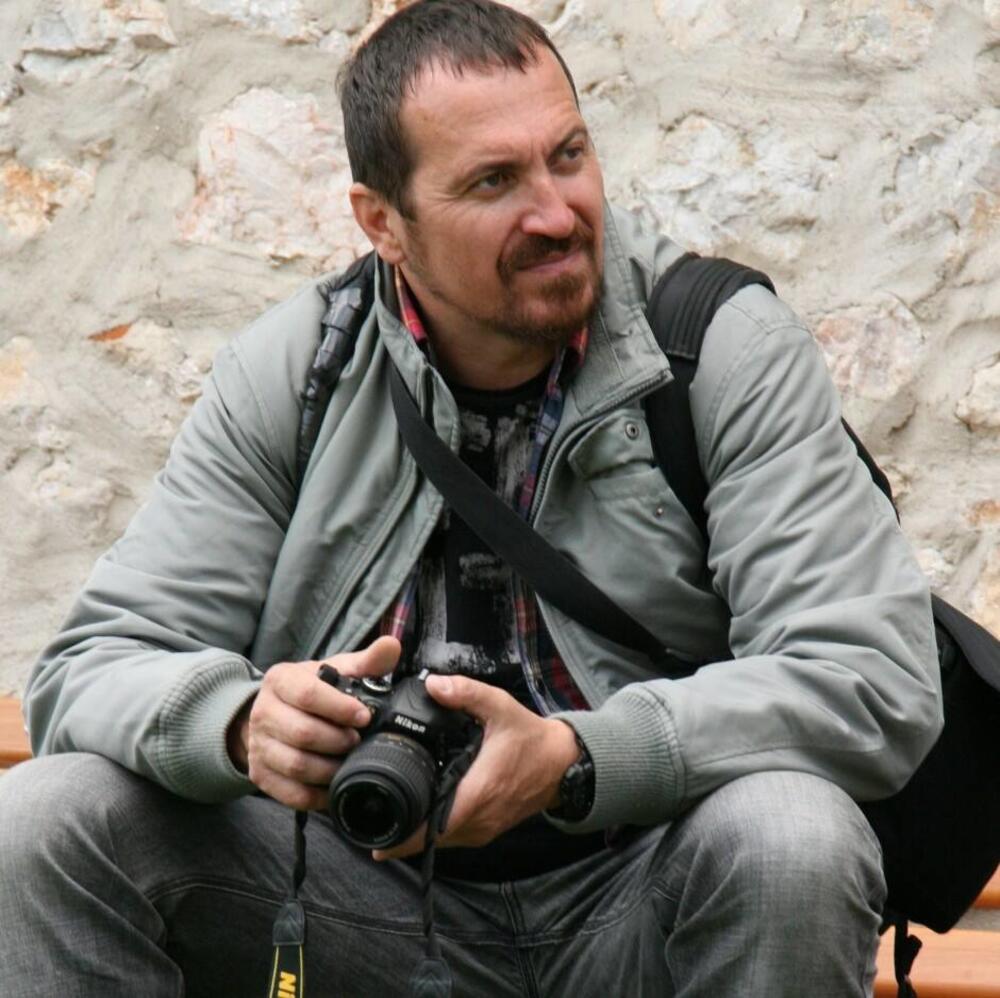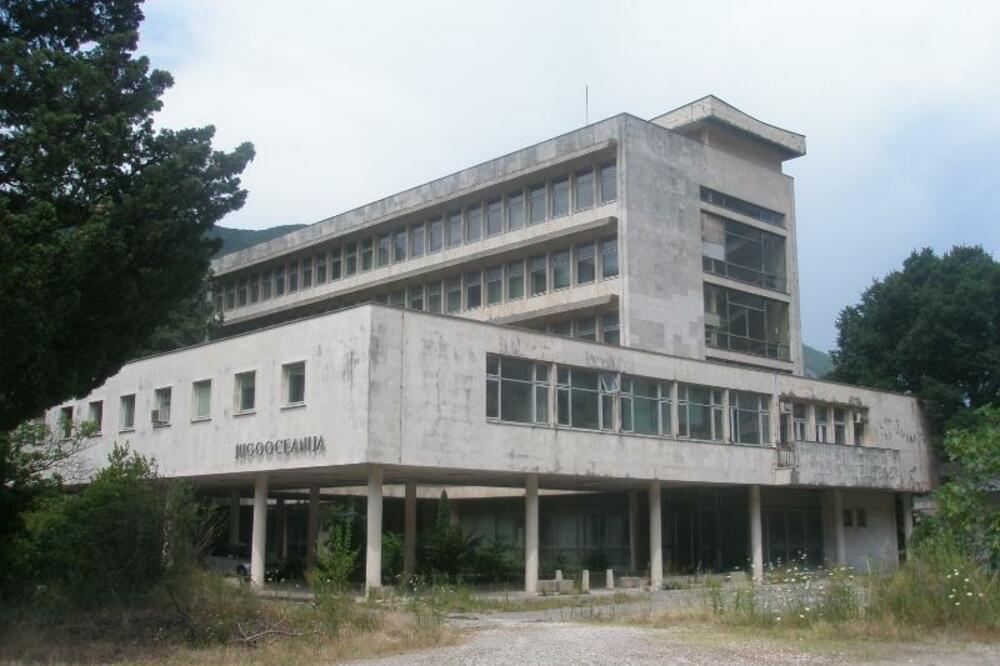The Administration for the Protection of Cultural Property (UZKD), even after more than seven years since accepting the initiative to protect the former administration building "Jugooceanija" in Kotor, has not protected one of the most significant buildings of modern architecture of the second half of the 20th century in Montenegro.
The "Jugooceanija" building was designed by famous Yugoslav architects Đorđe Petrović, Mateja Nenadovic i Đorđe Zloković. It was built in 1967 in the heart of Kotor, an area that has been on the World Heritage List of the United Nations Educational, Scientific and Cultural Organization (UNESCO) since 1979.
In addition to its architectural significance, this building also bears witness to the restoration of Boke's seafaring in the middle of the 20th century. "Jugoocenaija" was one of the largest companies of the former Yugoslavia. Experts agree that this building should be registered as part of the cultural heritage.
The non-governmental organization Center for Sustainable Spatial Development EXPEDITIO filed an appeal to prevent the demolition of the "Jugooceanija" building back in 2009, and in November 2014, an initiative for protection, which was accepted by the Administration in January 2015, and since then the procedure for the protection of that building has been ongoing .
Director of UZKD Mladen Zagarčanin za Center for Investigative Journalism of Montenegro (CIN-CG) claims that the "Jugooceanija" building will be protected by the end of this month.
The owner of "Jugoceania" and the nearby hotel "Fjord", which was also one of the architectural pearls of the 20th century, is the company "Boka Bay Investment". Immediately after the takeover, this company demolished the "Fjord" hotel, and a new hotel was planned to be built on that location, but it has not started.
The state, through mass voucher privatization, first handed over these facilities to the company "Alfa invest". Veselin Barović, then in 2005 it was sold through bankruptcy to Irish businessmen, and eventually fell into the hands of the company "Boka Bay investment". During all that time, different owners did nothing to valorize this space. A four-story building built in a modern style, surrounded by a park, in which there is an artistically valuable sculpture "Wind Rose" by the author Predrag Milosavljević i Dusan Ljubojević and bust Sava Starović founder of "Jugooceanija", although neglected, it still resists the test of time and waits for its old glory to return. At the entrance to the building is the inscription of the once famous maritime company of the former Yugoslavia. After the collapse of the company, for a time this space was used by artists, and it was also used for various meetings of local organizations. However, the owners later banned entry.
The owners of "Boka Bay" are on the website of the Central Register of Business Entities Orhan Pelinković, with a ten percent share, while the remaining majority share belongs to the Cypriot offshore company "GB-ACTGROUP LTD", which is allegedly backed by Turkish capital.
And while the marathon process for the protection of "Jugooceanija" before UZKD continues, the owners received from the Ministry of Ecology, Spatial Planning and Urbanism (MEPPU) in October of last year the urban planning and technical conditions (UTU) for the reconstruction, extension and conversion of "Jugooceanija".
According to the documents that CIN-CG had access to, the Ministry gave the green light for the reconstruction, although the investor did not do the Heritage Impact Assessment, which was requested by UZKD and which should have been sent to UNESCO.
On September 24 of last year, UZKD sent the Ministry a document stating that before issuing the UTU, it is necessary to carry out an Individual Assessment of the Impact on Cultural Heritage. 12 days later, the Ministry gave UTU the conditions for construction.
Architect Marija Nikolic clarified for CIN-CG that the UTU were reduced to a template in which the name of the investor and the plot numbers are changed, and the rest of the text is mostly the same. "As a rule, UTUs are issued without going out into the field and inspecting each specific location.
This approach is extremely bureaucratic, and urban technical conditions become just a formality. "No area should be built in such a way, least of all a World Heritage area," she said.
The architect pointed out that the "Jugooceanija" building is one of the most valuable examples of 20th century architecture, and that considering that it is located in the contact zone of the Old Town and bearing in mind its historical importance, it requires very thoughtful and careful planning of future interventions on it and around her.
"Urban planning and technical conditions must be preceded by conservation conditions, and these must be preceded by an individual assessment of the impact on heritage, which is submitted to UNESCO for evaluation," emphasizes the architect.
EXPEDITIO told CIN-CG that the attitude of institutions towards the protection of 20th century architecture is very bad, and that the system of cultural heritage protection in Montenegro has almost completely collapsed.
"Especially these types of architecture that were not in focus - architecture of the 20th century, industrial architecture, rural heritage, the situation is catastrophic, we have almost no examples of architecture of the 20th century that are protected, and what is there is meaningless", they pointed out from and non-governmental organizations.
They appeal to the authorities to urgently protect the Jugooceanija building, adding that this very process is the clearest reflection of the malfunctioning of the system.
"It is a big problem that the submission of an initiative for protection, but also the acceptance of that initiative, does not guarantee that the object will be preserved in the period from the submission or acceptance of the initiative to its eventual protection," EXPEDITIO emphasizes.
In addition to "Jugooceanija", only in the area of Boka there are other valuable buildings from that period that should be protected - the Risan hospital, the Port Captain's office, the "Plaža" hotel in Zelenica, the Post office building and part of the children's hospital in Herceg Novi, the hotel in Tivat, whose demolition plans...
Thus, despite the submission of initiatives for protection, the Auto-camp in Dobrota, the hotels "Mimoza" and "Plavi horizonti" in Tivat, "Jadran" in Ulcinj, the House of Culture in Risno, Virpazar, and the hotel "Durmitor" in Žabljak, while the hotel "Crna Gora" in Podgorica was reconstructed and completely lost its old appearance, and the garden was destroyed...
The international scene long ago recognized the architecture of the 20th century as part of the cultural heritage, but Montenegro does not seem to see it yet.
The exhibition at the Museum of Modern Art (MoMA) "Towards a Concrete Utopia: Architecture in Yugoslavia (1948-1980)" in New York is a good example. The exhibition was set up in 2018 and lasted for several months, and included around 400 drawings, photographs, recordings from the entire region from that period. The work of Montenegrin architects was presented Svetlana Kane Radovic.
In the world today, there are numerous and very significant initiatives that demand that the architecture of the last century be protected as part of the heritage, and many countries are working on this.
Lalošević: Jugooceanija - an elite facility of the last century
Professor of the Faculty of Architecture and former director of the Kotor Institute for the Protection of Cultural Monuments (ZZSK) Ilija Lalosevic it is feared that the intention of the investor is to demolish the Jugooceanija building and build a new one in its place.
Minority owner Orhan Pelinković, when asked if they intend to demolish this building, and what are their plans if the building is protected as a cultural asset, briefly answered for CIN-CG that they plan to reconstruct, extend and repurpose the "Jugooceanija" building and that "strictly respecting conditions of the Ministry of Ecology, Spatial Planning and Urbanism, UZKD and other public companies".

Professor Lalošević reminds that the owners of "Jugoceania", after the earthquake in Albania two years ago, claimed that the building was damaged by the earthquake. "That is impossible, given that the building did not have any structural damage even in the catastrophic earthquake on the Montenegrin coast in 1979. If such an earthquake with an epicenter nearby, which caused enormous destruction on the Montenegrin coast, could not damage this building, what could an earthquake with an epicenter in Albania do to it", the professor assesses.
At the time, several media outlets reported the owner's claim that this building was damaged by an earthquake, the epicenter of which was in Durrës.
Lalošević emphasizes that the building is exceptionally well-founded and built, that the structure is stable and that the owner's statement is not realistic.
"With some minor interventions and respect for authenticity, the building could be repurposed for another function, including a hotel. The state should certainly prescribe the appropriate conditions, which will ensure the preservation of the original building, parterre plan, horticulture and other characteristics of the location", assesses the professor.
Investors for CIN-CG did not want to elaborate on their plans.
"Jugooceanija", reminds professor Lalošević, was one of the most important institutions of that time in Montenegro, and it was also the initiator of the establishment of the then Higher Maritime School, today's Kotor Maritime Faculty.
Lalošević also states that he is a famous professor Frank Matero, from PENN University from Philadelphia, one of the best conservators and security guards in the USA, during his visit to Kotor back in 2008 drew attention to the importance and value of the building.
"During a tour of Kotor, even from the top of the hill where the San Giovanni fortress is located, he noticed the qualities of 'Southoceania', of which he was later further convinced by a close-up tour, saying that it is an extraordinary building, an excellent example of modern architecture of the mid-XNUMXth century ", the professor remembers.
At one time there was an idea, adds Lalošević, to house the offices of the Municipality of Kotor in the "Jugooceanija" building, but this was not realized.
"It would be ideal if it remained an administrative building, because the building was designed for that function, or for a compatible one, e.g. cultural purpose. This building, like many similar ones, should have remained a public good. Even now, the state could buy it again, or exchange it for some other real estate, when at one time it did not want or was able to keep it in its ownership", concluded the professor.
Administration: Jugooceanija will be a cultural asset until the end of the month
UZKD Director Mladen Zagarčanin claims for CIN-CG that the procedure for the protection of "South Ocean" has been completed, as well as for the 19th-century fortifications of Arza on Luštica and Tabija in Sutomore. According to Zagarčanin, all these buildings will become protected cultural assets by the end of February.
"Why wasn't something, which was an initiative from 2016, valued then, you should ask the then director, by the way, she could also explain why Mamula, a protected cultural property, is now a casino hotel, why she gave permission for Kostanjica, Jadran in Perast, Verige...", stated Zagarčanin.

The director of this institution, from July 2013 to May 2018, was Anastasia Miranović. Zagarčanin has been at the head of the Administration since August last year.
He explains that the Ministry of Culture launched an initiative in 2012 for each municipality to propose its own cultural asset created in the 20th century, and that a list of 48 monuments was made. However, to date, only five of them have been protected and all of them in Podgorica - Labud beach, the Post and Municipality building, the Vasa Pavić music school building and the "Podgorica" hotel.
"It is not clear to us why all other initiatives were rejected. After the government that fed cultural assets, we have a lot to protect, among other things, the monuments of the 20th century," adds the Director of the Administration.
Answering the question of CIN-CG why the Administration itself does not initiate procedures for the protection of cultural assets, Zagarčanin says that the Administration initiated procedures for the protection of Arza and Tabija, as well as the bridge on Đurđevića Tara.
"We will also finish Bihor, a medieval town, Vrmac and several others. But first we have to sit down with people from the government and agree on a new systematization, young people, architects, art historians, archaeologists, conservators must be employed...", assesses Zagarčanin.
He adds that the Administration has a big problem with personnel, and that it is impossible to finish all the work with 40 workers.
It is important to protect the interior as well as the environment
The Law on the Protection of Cultural Property states that cultural property is any immovable, movable and intangible property that has been determined to be of permanent historical, artistic, scientific, archaeological, architectural and other social significance, and that can be in state or private ownership.
The environment that makes up the whole, as well as the interior, is also considered a cultural asset.
Experts also point out that the interior and surroundings of the building are very important, and that they form an integral part of the cultural property, and that it is necessary to preserve them almost as much as the building itself.
Professor Lalošević points out that, when it comes to the "Jugooceanija" building, it is also very important to protect the park as an integral part of the building.
"It is not only about protecting the building, but also its environment and the park, the fountain, the 'Wind Rose' sculpture, but also the most important features of the interior," he emphasizes. He reminds that a large part of the movable property of "Jugooceanija", the movable fund, almost all the furniture, the archive has been destroyed.
The Law also states that prior protection is established on property that is reliably believed to have cultural value, in order to prevent destruction, damage or disappearance.
"It is very important that in the law there is a possibility that anyone who believes that certain objects have cultural value can initiate proceedings, but the protection service would have to protect what is most valuable in Montenegro, and that is not happening," the NGO explains. EXPEDITIO.
Experts add that we should already have all these facilities protected for the protection service to function.
Unfortunately, initiatives for protection most often did not have an effect, Lalošević points out, because at one time the management of the administration claimed that the protection service should not be a business barrier.
Experts explain that accepting the initiative is not enough, and that until the building is legally protected, it is in danger of being demolished.
The protection system collapses before the onslaught of investors
Lalošević reminds that a very valuable architectural building from that period was demolished in Tivat - the hotel "Mimoza". Not only has it been demolished, he adds, but instead of a hotel, condo apartments, that is, apartments for the market, are being built on that site.
"Investors, of course, like the construction of apartments the most, because with such construction huge profits are realized in a year or two, while with hotels it takes much more time to pay off the investment and start making money. The state must impose, force and encourage hotels, not apartment complexes," the professor says.
He reminds us that many of our old hotels were needlessly demolished after the 1979 earthquake, and could have been repaired and restored, but new, bigger and "prettier" hotels were preferred.
"This is how the old 'Boka' hotel in Herceg Novi, the 'Slavija' hotel in Kotor, the 'Avala' in Budva, the 'Jadran' hotel in Ulcinj, the 'Grand' hotel in Cetinje, the old Austro-Hungarian hospital in Kotor, the cultural center in Risno perished. - most of those buildings could have been renovated, if there had been awareness of their value and importance", reminds the former director of ZZSK.
The hospital in Risno, he adds, is the work of a famous architect and professor Milan Zloković, is currently undergoing some kind of major reconstruction, and should be protected. "There are still authentic parts of the facade, halls, staircases, courtyards," he points out.
Lalošević adds that the building of the Port Authority in Kotor, also the work of Zloković, should be protected.
Hotel "Plaža" in Zelenica, reminds Lalošević, is currently the oldest preserved hotel in Montenegro, built in 1902. "It is also the only preserved hotel from the beginning of the 20th century in Montenegro, it could be restored like hotels of this type around the world", says Lalošević.
The protection of cultural assets depends primarily on political will, that is, whether the government will preserve it for its strategic partners or preserve the heritage as a unique and valuable resource, on the basis of which it will develop the country.
"The old resort of Opatija managed to preserve the largest number of hotels over 100 years old. In this way, it preserved the spirit of that time, and elite tourism is still built on it today. There are many similar practices in the wider environment, for example Venice, Ravelo, Capri in Italy", concludes Lalošević.
The register of cultural goods does not exist
In recent decades, a very small number of cultural properties have been protected, and the problem is that we do not know what is all protected, because there is no list of protected cultural properties on the website of the UZKD, nor on the website of the Ministry of Education, Science, Culture and Sports (MPNKS).
According to the Law on the Protection of Cultural Property, it is stipulated that the register is maintained by the Protection Directorate and is available to the public.
Zagarčanin stated that the register of cultural assets was not published on the website, because it is completely incorrect, emphasizing that this register is "the biggest shame of the protection of our monumental treasure, because it does not exist".
He explains that the revaluation that began in 2012 was falsely declared completed in 2014, only to then remember that it was invalid, so in 2017 they set a deadline of five years for a new revaluation.
This means, he adds, that on July 22 of this year the legal status for all cultural assets will expire, which, if the work is not completed, could lead to enormous consequences.
"We only have seven months for a job that has been done for five years," said the director of the Administration, recalling that the revaluation, which was imprecise, cost over a million euros.
We lost the factories forever
Experts point out that other objects of 20th century architecture are the result of a very high-quality Yugoslav school of architecture, and most of them have significant value.
"Factories that could have been preserved and were very attractive have been lost forever. A well-known example is the Tate Gallery in London, where an old factory complex was transformed into one of the most important centers of art", according to EXPEDITIO.

Bonus video:




